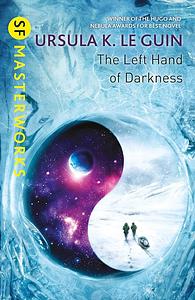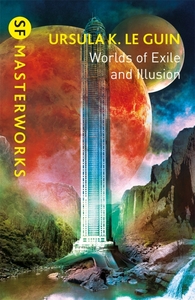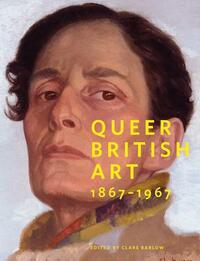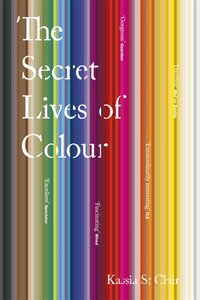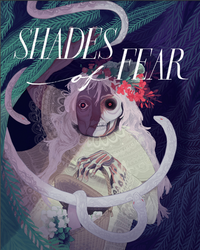Take a photo of a barcode or cover
mars2k's Reviews (234)
adventurous
hopeful
reflective
tense
medium-paced
“Why can I never set my heart on a possible thing?”
The Left Hand of Darkness is difficult to evaluate. I have to remember that the book came out in the 1960s; I can appreciate that it must have been groundbreaking in its own time while acknowledging that it seems quite limited by today’s standards.
Le Guin takes the premise of gender politics and pulls from it the central question of this book: what would politics look like in a world without gender? But her exploration of this idea is constrained by her own biases, namely misogynist, misandrist, bioessentialist, and cisnormative assumptions. Some of these biases may be Genly’s rather than Le Guin’s; if so, I don’t think enough was done to interrogate and deconstruct such notions as men being defined by conquest and women being either sweet or shrill – they’re taken for granted. Genly did slowly learn to accept Estraven for who he is instead of trying to categorise him as male or female, despite initially struggling to understand Gethenian “ambisexuality.” That’s something. I just wish Le Guin had gone further in using this opportunity to really dig into gender as a social construct and the associated social roles and stereotypes. It also would have been nice to see her use neo(/xeno?)pronouns, or even singular they, rather than defaulting to he/him. Honestly, the argument that masculine pronouns are actually more gender neutral than gender neutral pronouns because we use them to refer to God was ?? ludicrous. Divine Cisness crops up again in Genly’s genetic experiment theory, which positions cis people as both normal and godlike. You can’t just throw that in without examination. Am I meant to assume he’s right or is this just Genly’s ego on display? Maybe it’s a meta reference to the Gethenians being a thought experiment? I’m not sure what I’m meant to take from this. I don’t think it was meant to be so thought-provoking, at least not in this way.
I also have to note the queerness that emerges from this insistence on masculine gendering. I’m not sure I’d call Genly and Estraven’s relationship homoerotic since it’s surprisingly chaste. There are some cute moments between them. But sometimes it did feel as though Le Guin made her Gethenians quasi-gay just so she could bury them. So many of their relationships end in death and tragedy.
Apart from the gender philosophy, the setting stands out as well; a stark, hostile environment dominated by ice and snow. Bleak. Le Guin’s prose is as evocative as usual, though the facts and figures do spoil her descriptions somewhat (seriously, I don’t need to know the exact temperature in Fahrenheit – tell me about icicles or whatever).
The Cold War parallels are obvious in the tensions between Karhide and Orgoreyn (representing the USA and the USSR respectively). I suppose they also tie in with the Taoist dualism recurrent throughout the book; two sides of one coin. I can see a lot of thought went into their cultures, particularly the ways in which they spoke, with one being perhaps overly mindful of pride and honour while the other seems direct but is actually adept at subterfuge. Tibe should have played a bigger role and should have had more screen time (page time?)
A seminal work, no doubt, but did I like it? I feel like I’d enjoy this book more on a second reading, knowing which characters are important and being assured that everything comes together in the end. I can see myself giving it four stars in that case. As it stands, I’m not sure I can rate it that highly, but I certainly can’t give it a low rating. I’m glad I read it, and my opinion does generally skew positive. That this book exists is a feat in itself, even if it does have its flaws.
CONTENT WARNINGS: descriptions of sexuality and sexual anatomy but no sexually explicit scenes, sexism, homophobia, suicide, death, murder, violence, (impending) war, human trafficking, imprisonment, prison labour, forced sterilisation, drugging, mentions of rape, and incest
adventurous
dark
mysterious
medium-paced
Rocannon’s World – 3.0☆
“What I feel sometimes is that I . . . meeting these people from worlds we know so little of, you know, sometimes . . . that I have as it were blundered through the corner of a legend, of a tragic myth, maybe, which I do not understand . . .”
This was Le Guin’s debut novel and let’s just say I’m glad it wasn’t the first I read. Rocannon’s World is not as sophisticated as some of her later works, and it lacks that feminist and anarchist philosophical underpinning she’s known for. I kept wanting to read some profundity into it, interpreting the story’s assumptions as some sly commentary on patriarchy and colonialism. Why, for example, is it called “Rocannon’s World” and not “Semley’s World” or “Yahan’s World”? I don’t think it was intended to be subjected to such scrutiny, though.
The writing style is distinctly Le Guin’s – imaginative and eloquent. I like the combination of sci-fi and fantasy, and I like how scientific concepts such as time dilation are given an almost mythic quality. The prologue establishes truth as a central theme, specifically the contradiction/interplay of facts and legends. I wish more had been done with that. While I’m talking about the prologue, I should note that it was originally a standalone short story called The Dowry of Angyar, which explains why it feels so separate from the rest of the narrative. It’s the strongest part of the story by far, and is probably weakened by the more conventional SF/F quest that follows it.
Overall Rocannon’s World is a fairly dull story framed by interesting worldbuilding. In that way it’s similar to The Farthest Shore, which I gave three stars; I’ll give the same rating here. Decent, but a shadow of what Le Guin was capable of.
Planet of Exile – 3.5☆
I’m not sure what to make of this one. There’s a lot to chew on, though; it seems to have a lot more to say than Rocannon’s World did.
Prejudice is a major throughline, with the indigenous Tevarans and the “farborn” colony constantly butting heads and casting aspersions about each other. The relationship between Rolery and Agat seems, at first, to be an age-old tale of star-crossed lovers, but it becomes clearer as the story progresses that it may not be so romantic after all.
Well, I say that, but I’m not sure how it was intended to come across. As in Rocannon’s World, it can sometimes be unclear which aspects of her worldbuilding and storytelling Le Guin wanted the reader to interrogate and which are supposed to be taken at face value. Maybe we are supposed to believe the two of them are truly in love. The way I see it, however, Rolery’s anguish at having no prospect of marriage and motherhood and Agat’s fixation on their native/coloniser dynamic cannot be overlooked. It doesn’t seem healthy.
There’s a tension between Rolery and Agat in the narrative itself. Rolery seems to be the protagonist but then the perspective keeps snapping back to Agat and the story ends with him and his feelings. Rolery becomes more and more passive until she’s essentially an object, a prize.
The pacing is quite uneven and Le Guin relies a little too heavily on telling instead of showing. Still, the prose is evocative. There’s some really interesting stuff relating to time and people’s experience of it. I think Le Guin is starting to find her feet here.
City of Illusions – 3.5☆
The final instalment of the collection complements the first quite nicely; a story about truth vs a story about lies. It’s a shame gender nonconformity was used as shorthand for deception but hey, I must admit “grotesque and frail in her transvestite clothes” is a mood.
I feel like there’s a lot to dissect but also not a lot. The first half of the narrative is a slog, a series of occurrences along a journey with only an abstract destination in mind. It feels aimless, episodic. But the story does pick up in the last few chapters. The ending plays with some fascinating ideas but could have handled them more skilfully, I think.
The protagonist, Falk, isn’t particularly compelling. He’s too passive, simply travelling from one location to the next. The existence of Falk-Ramarren – the perseverance of Falk’s consciousness even after being brainwashed and having his previous identity reinstated – would make more sense if Falk had been characterised as assertive and tenacious up to that point. As it stands, it’s a neat idea but it’s just not consistent with the rest of the narrative.
Between the copious drug use and the weird gender stuff and the plurality right at the end, City of Illusions is somewhat reminiscent of Dune. This similarity only highlights its shortcomings, however; Dune works, but this story just never quite clicks.
I appreciated this glimpse into Le Guin’s origins as a novelist – you can see she’s already growing and learning and honing her craft. Ultimately, all three stories were unrefined but not bad for a debut author. I look forward to reading The Left Hand of Darkness.
CONTENT WARNINGS: colonialism, racism, sexism, eugenics, violence, war, fires, death, animal death, mindprobing, brainwashing, unreality, amnesia, drugging and drug use (medical and recreational), some blood and gore, mentions of miscarriage, mutilation, rape, slavery, and suicide, also some transphobia?
adventurous
fast-paced
After reading The Weeping Angels of Mons my expectations for Titan Comics were low, but Origins somehow managed to be worse than I expected. The narrative is patronisingly simple and predictable, and the artwork is copy-pasted to an absurd degree. It’s honestly quite insulting.
I got nothing from this. I didn’t learn anything new about the Fugitive Doctor or the Division or anything else a title like “Origins” would imply. And the menagerie of creatures (including Carrionites, Tetraps, and Nimons) on the cover don’t ever appear in the comic itself.
Here’s the thing: Origins didn’t have to be great. It could afford to be mediocre because any Fugitive Doctor content is going to be eaten up by fans desperate to see more of her. But even with that in mind, the comic fails to deliver.
Hard pass. The only reason I’m not giving it a lower rating is because the story is coherent, at least, and it’s not like the book is riddled with bigotry and bad politics – it’s just weak.
CONTENT WARNINGS: genocide, evacuation, imprisonment
Doctor Who: The Tenth Doctor, Vol. 2: The Weeping Angels of Mons
Robbie Morrison, Elena Casagrande, Daniel Indro
adventurous
dark
tense
fast-paced
I didn’t like this comic. The idea of Weeping Angels hunting in the battlefields of WWI has potential, but the execution is just plain bad. What a waste.
So, this is actually the second volume of the series. I was a little concerned about having missed the companion’s introduction in the previous volume but I needn’t have worried; she didn’t have particularly strong characterisation and wasn’t given much to do (something akin to series 7b Clara). To be honest, the story might have worked better had it been a solo adventure with just the Doctor post-Donna, like The Waters of Mars. Or the Sixth Doctor and Peri, since that’s how they’re written.
The Doctor is awful throughout. Yes, this incarnation is prone to anger, callousness, and arrogance bordering on megalomania, but this was just cringey. He dunks on a clergyman for idk being religious, I guess? “You’d have to ask why your God would let this war happen in the first place.” Hm.
There’s tons of clumsy exposition about the Weeping Angels, but nothing that hasn’t already been said in Blink so it’s of no consequence to the reader. A simple “don’t look away, don’t blink” primer/recap would have sufficed.
Far too much emphasis is placed on the Angels’ claws and fangs, even though that only works as a jumpscare and their serene expression is honestly scarier. The artwork is so reliant on the (overestimated) shock value of that rawr face that it seems to lose track of what makes the Weeping Angels so iconic, namely the way they move almost instantaneously when not observed. I think there’s a lot you could do with that concept in this medium. Play with darkness; an Angel points at a light, the next panel is pure black, the third shows the Angel in a different position. Have scenes in dark places – with lots of black shadows like in Mike Mignola’s work, not just a blue tint that suggests shade – making the reader feel as though the characters could slip into the shadows at any moment and lose track of the Angel that’s stalking them. Even the turning of pages could be used to simulate the effect of blinking. But no. All we get is >:O
The story has a hole in it. Not a plot hole, exactly, but a cavity nonetheless: faith. The clergyman’s faith is dismissed and ridiculed, so it’s clear the author doesn’t want to seriously engage with the topic. But the Doctor describes the front lines as “the perfect hunting ground” for the Weeping Angels because of the countless soldiers and civilians killed or missing. It’s unclear why this is significant. Is the implication that they can get away with hunting a few soldiers since no one will notice they’re gone? That makes no sense because so what if someone did notice? The quantum-locking mechanism is supposed to make the Angels impervious to attack so they have nothing to fear from humans. Another interpretation: people are desperate, so they actively seek out the Angels. That would explain the Doctor’s claim that they “[tap] into primal fears and religious beliefs.” Maybe some of the soldiers believe the Angels to be divine emissaries they ought to commune with. Or maybe they witness the Angels transporting people elsewhere and see that as a way to escape the horrors of war.
See? It almost works. Almost. Some of the pieces are there but not all of them, and those that are present don’t quite fit together. The only pious character we see is the clergyman. He’s hardly a stand-in for all the soldiers and civilians caught up in the war. We don’t see expeditions to seek the Angels out. We don’t see an Angel waiting calmly in the ruins, arms outstretched as if to embrace a shell-shocked soldier. We don’t see a deserter being touched by an Angel and sent back to the trenches he fled. We see >:O
There’s a lot more I could criticise but you’ve probably had enough of my complaining.
Positives? I think the cover art is stunning. And, as I said before, I think the story really did have potential. It’s just a shame that that potential wasn’t met.
CONTENT WARNINGS: war, violence, death, animal death, railway disaster, some body horror, some fatphobia, the whole thing feels vaguely misogynist too
CONTENT WARNINGS: war, violence, death, animal death, railway disaster, some body horror, some fatphobia, the whole thing feels vaguely misogynist too
reflective
fast-paced
The Queer Art of Failure is a difficult book to review because Halberstam, in the introduction, announces his intention to provoke and annoy – does my frustration, then, not indicate a success on the author’s part? Even the title could be interpreted as a clever set-up, recasting the book’s failure to deliver on its promises as a demonstration of that titular “Queer Art.”
The idea of analysing animated movies through a queer and/or anticapitalist lens is not a new one, at least not to me. I’ve watched my fair share of video essays. Perhaps this approach was innovative in 2011, when the book was published, but any novelty it may once have had has since been lost. Maybe that novelty carried it a decade ago. Now it’s just another entry into the genre, and a relatively weak one at that.
It has an intriguing premise, but the execution is lacking. When Halberstam does make a good point it’s rarely relevant to the overall theme. Most of his arguments are either about queerness but not failure, or about failure but not queerness. Calling misfits “stupid,” for example, has a lot more to do with ableism than homophobia. And the masculinist interplay between homosexuality and fascism has little if anything to do with failure. The most convincing demonstration of queer failure the book has to offer is a section on butches, presenting them as women who “fail” to perform womanhood and lesbians who “fail” to appeal to the male gaze, and arguing that masculinity itself is a near-mythic ideal that everyone, including cis men, “fails” to fully realise. Besides these occasional insights, there’s more shlock here than substance.
I’m disappointed. I’d hoped for more. Maybe it’s just not for me. At one point I genuinely wondered whether this whole book was simply a joke at the reader’s expense. I don’t understand why it’s heralded as a classic of queer theory, but hey, if you got something out of it that’s great.
CONTENT WARNINGS: self harm, suicide, slavery, the Holocaust, fascist ideology, use of slurs such as tr*nny and f*ggot, also a preoccupation with pedophilia and incest which manifests as incessant sexual readings of children’s interests and relationships
CONTENT WARNINGS: self harm, suicide, slavery, the Holocaust, fascist ideology, use of slurs such as tr*nny and f*ggot, also a preoccupation with pedophilia and incest which manifests as incessant sexual readings of children’s interests and relationships
informative
reflective
medium-paced
A little disorganised, a little repetitive, and weirdly dry considering the preoccupation with eroticism. What’s more, this book is so cis it barely even registers to me as queer. Seriously, how can you look at an artist who vehemently rejected their birth name and all gendered terms and then not consider the possibility that they might have been trans, or do so only as an afterthought? True, we’ll never know exactly how they would have identified if they were around today, but, since we have more evidence supporting a trans interpretation than a cis one, why does a cis reading take precedence? I wouldn’t call the book transphobic, but the cisnormativity is palpable.
Other than that, my opinion of Queer British Art generally skews positive. It didn’t blow me away but it’s a nice little collection of (possibly) queer artists and artworks.
CONTENT WARNINGS: homophobia (especially as it relates to criminalisation), deadnaming and misgendering (arguably), discussion of sex and depictions of nudity, mentions of sexual exploitation and assault, racism, fascism, incest, suicide, and death
Other than that, my opinion of Queer British Art generally skews positive. It didn’t blow me away but it’s a nice little collection of (possibly) queer artists and artworks.
CONTENT WARNINGS: homophobia (especially as it relates to criminalisation), deadnaming and misgendering (arguably), discussion of sex and depictions of nudity, mentions of sexual exploitation and assault, racism, fascism, incest, suicide, and death
informative
lighthearted
reflective
relaxing
fast-paced
The Secret Lives of Colour is not designed to be read cover-to-cover; it’d be more suitable as a coffee table book, or a book kept on a nightstand so that a couple of pages can be read each evening before bed. I read it over the course of a few days, and I recognise I might have enjoyed it more if I hadn’t taken this approach.
That’s not to say I didn’t enjoy it, though. I remember I particularly liked the sections on Chrome Yellow, Puce, and Cobalt. I liked the way many sections focused on a specific historical figure – often the discoverer of a pigment or someone who popularised a colour or transformed its symbolic meaning. I was also introduced to the mediaeval taboo against mixing colours, which was an important note in the chapters on green and brown pigments. Given my background in art and design, I was expecting to already know most of the facts this book had to offer. The wealth of new information was a pleasant surprise.
St Clair’s area of expertise is fashion, and it shows. Clothing and cosmetics are discussed more often than fine art. Which is fine! But I was hoping for more art history. The section on Ginger, for example, very briefly mentions Titian, but it’s mostly about famous redheads from history and in fiction. There are also several sections which really delve into namesake substances but spend very little time exploring the pigments themselves and their history of use. Of course, with the way the book is structured, it’s inevitably going to be somewhat cursory. The problem is that it tends to veer off on tangents and focus on the wrong things (in my opinion).
The introduction opens with a primer on colour vision which seems a bit extraneous. Sure, it is technically an introduction to colour, but the study of colour in art and the study of colour in science are two very different disciplines – wavelengths aren’t relevant here. And it’s not as though colour as a concept needs an introduction, so I don’t really see the purpose of all that to begin with.
All in all, The Secret Lives of Colour is a decent book. I did learn a lot, but there’s also a lot that could have been cut or that could have been added. Still, I liked it well enough.
CONTENT WARNINGS: racism, fascism, colonialism, slavery, war, death, murder, suicide, illness/disease, drugs, alcohol, blood, urine, excrement, and sex all talked about though never in graphic detail
Shades of Fear
Grendel Menz, Jade Zhang, Joy San, Allison O'Toole, Shannon Wright, Mar Julia, Amber Huff, Tess Eneli Reid, Ashanti Fortson, Olivia Stephens, Molly Mendoza, Desolina Fletcher
dark
medium-paced
How to Survive a Haunting by Jade Zhang – 4.0☆
I’m a sucker for red and teal. I think that limited palette does a good job of tying all the strange imagery together into something vaguely cohesive. A strong opener.
This One Goes Out to You by Molly Mendoza – 5.0☆
Oh wow! I was sceptical about Mendoza’s choice to go for a sound-based concept in a visual medium and in an anthology which celebrates visuals, but somehow this works. It shouldn’t but it really does. The artwork is gorgeous and mesmerising, making use of both fine attention to detail and gestural swirls of vibrant colour. Already I’m revisiting it, just to stare.
Turtleneck by Joy San – 3.0☆
This comic doesn’t match its promotional artwork at all. That was a minimalist graphic, compensating for its limited palette of only black, white, and red with a clever use of negative space. This is drawn with watercolours, for starters. I like the contrast of cool greys and warm pinks. I like the melding of cosy warmth and viscera. It’s not bad but it’s not what I was hoping for.
Bellies by Mar Julia – 4.0☆
Carefully detailed. Captures the eerily ethereal atmosphere while allowing the main character to be expressive and human. That orange-red colour is perfect; bold enough to convey gore but soft enough to complement the golden hues. My only complaint is that this comic seemed to be setting up something bigger than its nineteen pages could hope to explore. I’d love to see this world expanded on in a full-length graphic novel.
Hyssop by Olivia Stephens – 3.0☆
I’m not sure what to say about this one. The scribbly art style isn’t for me but it works well enough. I guess “outside” is a metaphor? I dunno.
Broadcasting by Grendel Menz – 5.0☆
Another stunning comic. I love the way the text distorts and the images overlap. The bright colours give the illustrations a sickly intensity that perfectly conveys the protagonist’s almost psychotic overwhelmedness. Fantastic.
Nina by Desolina Fletcher – 3.5☆
I like the concept but the execution was off; the story needed to slow down and linger. More intimacy, more detail in the drawings to encourage the reader to pause. I do really like the line “you used me cleverly and well.”
The Hue of Heaven by Ashanti Fortson – 4.0☆
Similar enough to Bellies to complement it well but distinct enough to stand on its own. It’s clear that a lot of thought went into the designs of the clothing. I also like the way the angels’ wings carried a lot of detail without the artist fussing about making them overly realistic – they looked almost sculptural. Pretty.
Strawberry Kiwi by Shannon Wright and Kyree Saintilus – 3.5☆
I mean it looks good but I don’t have much else to say about it. It’s decent.
Slip Stitch by Tess Eneli Reid – 4.5☆
This is probably the story I was looking forward to the most and, yeah, it’s solid. Keeping it simple with the yellow/blue colour palette; “you see blue, something’s gone wrong” (you know where this is heading). Good stuff.
CONTENT WARNINGS: it’s a horror anthology so creepiness in general, surreality, dereality, hallucinations, body horror, gore, blood, vomit, self harm, death, murder, child abuse, religious trauma
dark
mysterious
tense
medium-paced
Death in the Mouth is hit-or-miss like any anthology, but overall my opinion skews positive. There were a few stories that stood out as solid examples of the horror genre. “They Will Take Up Serpents” by Yah Yah Schofield was really good but I think should have been cropped to just the baptism scene. The second half isn’t bad but that first half would stand up perfectly well on its own and a tight story is stronger than a bloated one. I liked “What Hurts Henry Watanabe” by J L Akagi but the ending did hinge on the protagonist doing something that was obviously foolish. “Tongue Is a Void” by P H Low deserves a shout-out too; it was wonderfully poetic and didn’t overstay its welcome. This collection also includes “Some of Us Are Grapefruit” by Rivers Solomon. I’ve been meaning to read Solomon’s work for a while now and this was my first experience of their writing. I can’t say I fully understood the story but I was certainly intoxicated by it, so I’ll be keeping an eye out for their other works.
Each story was accompanied by a black-and-white illustration. I think this was a wise move because, with so many tales packed into one anthology, the artwork went a long way to break up the text and separate the stories from one another – plus it’s nice to look at! My favourites were Solomon Enos’s piece for “Paradise” and Viv Magaña’s for “The Mother-Wound.”
Would I recommend Death in the Mouth? Sure. I wouldn’t call it a must-read but it’s a fitting choice for spooky season. I think the cover art alone makes it worth buying.
CONTENT WARNINGS: surreality, body horror, gore, lots of bodily fluids (blood, urine, etc), alcohol/drugs, sex, sexual harrassment/assault, impregnation, self harm, suicide, murder, death, violence, child abuse, gaslighting, religious trauma, stalking, and generally unsettling vibes typical of horror fiction
medium-paced
Dry as dust. There were a few ideas I found interesting, such as the gendering of media consumption (with the novel being seen as inherently feminine/effeminate), and the way footlights revolutionised the theatre experience by promoting the audience’s total immersion in a fiction. There’s something to be said about truth and verisimilitude – reality vs the unreal, “real” apparitions vs hoaxes, suspension of disbelief; the book does toy with this theme, but never commits to it.
I found The Rise of Supernatural Fiction rather dreary for the most part. Engagement required conscious effort. Maybe I’m just not in the mood for history books right now, or maybe this book in particular needed some restructuring.
CONTENT WARNINGS: some discussion of death (ghosts, murder, but nothing graphic), also sexism and misogyny
